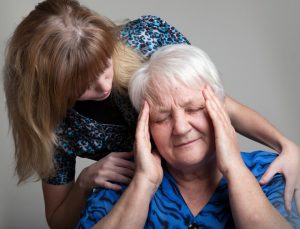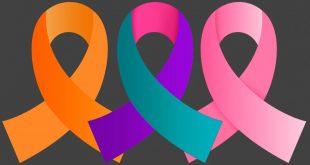
Many Americans today have experienced a stroke, and many remain at risk. Although it is possible for almost anyone to have a stroke, certain risk factors increase the chances of having one. If you or a loved one is at risk, it is vital to know and recognize the symptoms of a stroke so that you can take precautions. As the third leading cause of death in the United States, strokes are true medical emergencies and it is critical that you obtain medical help if you see someone having a stroke.
What Is a Stroke?
The basic definition of a stroke is a decrease in blood flow to a part of the brain, and the consequent neurological symptoms from the lack of oxygen. There are two types of stroke—Ischemic and Hemorrhagic. The former is caused by blood clots (usually formed elsewhere in the body and breaking free to lodge themselves in a blood vessel in the brain), and the latter by bleeding in the brain. Both can lead to permanent damage or death, but it is more important to identify the general symptoms of a stroke than to try to determine which type has occurred. In either case, the victim must quickly receive medical attention.
Who Can Have a Stroke?
Plenty of risk factors are present in the American lifestyle, but fortunately many are preventable. Modifying your habits can significantly decrease your chances of having a stroke, even if you are at risk from other factors you cannot modify. Cigarette smoking, obesity, drug and alcohol abuse, and a sedentary lifestyle all contribute to increased risk, but these factors can be changed. Modifying these habits also reduces your risk for other medical conditions, such as heat disease or diabetes.
Other factors are not modifiable. Age and heredity are the two primary factors that cannot be altered, but a stroke can most likely be avoided even if you are getting older and have a family history of strokes. If you have relatives who suffered from strokes in the past, you will have to take some precautions, such as maintaining a healthy diet and getting physical exercise.
Since 85% of strokes occur in the home, it is important to identify any risk factors present in family members living with you. Older relatives should be made aware of the risk, and everyone should be prepared to recognize a stroke if one occurs.
What Does It Look Like?
A stroke may happen abruptly or more gradually, but involve the same symptoms. Look for weakness or paralysis (especially on one side) and speech confusion. Stroke victims will often lose function on one side, such as the right leg and arm and the right side of the face. Facial drooping to one side is common. The victim will also likely lose the ability to speak coherently, or may lose speech entirely during the episode.
If you suspect someone is having a stroke, you can rapidly identify symptoms through a few simple tests. Ask the victim to smile, and look for drooping of the lips on one side, or any abnormal movement. Have the victim close his eyes and then ask him to extend his arms out in front of him. Observe whether one arm does not move or drifts away from the other. Finally, ask the victim to repeat a simple sentence. Listen for slurred speech or inappropriate words. It is also possible the victim may not be able to speak at all.
What to Do If Someone Has a Stroke
Once you have identified the symptoms of a stroke, it is critical to get help as quickly as possible. Call 911 and relate the symptoms to the emergency dispatcher. Stay on the phone with 911 until the dispatcher says it is okay to hang up. While you are waiting for an ambulance, keep the victim calm and make sure he is breathing adequately. Be aware that facial paralysis may prevent the victim from being able to cough, so you may have to help keep the victim’s mouth clear to prevent aspiration of saliva. In cooler environments, keep the victim warm with a blanket.
It is crucial that the victim receives emergency medical help as soon as possible. Some hospital treatments (such as fibrinolytics, the treatment for breaking up blood clots in the brain) are only effective within the first couple hours after a stroke’s onset, so time is critical. If the victim receives medical care promptly after experiencing a stroke, the chances of full recovery are dramatically improved.
Cassie
Power Team Writer
This article is intended to convey general educational information and should not be relied upon as a substitute for professional healthcare advice.



